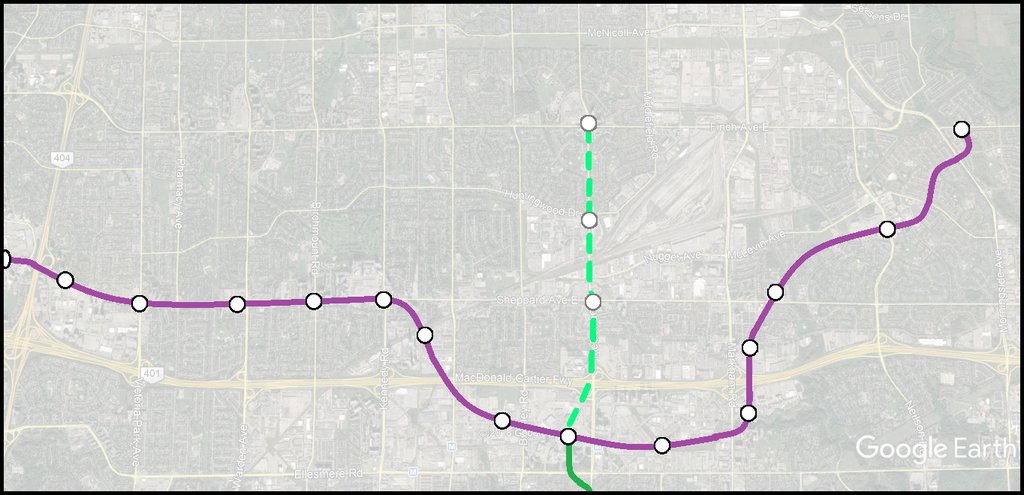syn
Senior Member
There's also Sheppard West, and the Scarborough Rocket. Throw those two in, and ridership outside the subway reaches about 56K PPD, more than the subway. When you also consider that a subway extension would just about double existing bus ridership (as it did with the original sheppard subway due to the improved connections with cross routes like the Leslie bus), there seems to be a fair initial business case for it. All in all, the 15km final subway (Sheppard West to STC) would have an estimated ridership of about 200K PPD if densification is to occur along the route. It's not huge, but certainly not horrible. It's comparable to that of the Bloor danforth subway (Which is twice as long and carries about 500K passengers per day (Less recently, it was closer to 450K PPD. Ridership along that line has skyrocketed in recent years). There's a business case for the corridor. Not now, but certainly after Eglinton and the Relief Line.
Again, not terribly impressive - that's three independent routes on Sheppard covering about 35km - and the ridership is only 12,000 higher than the 11km 29 Dufferin. And that's just one bus route from one Bloor/Danforth subway station, with another station about 600m west and another less than 800m east.





